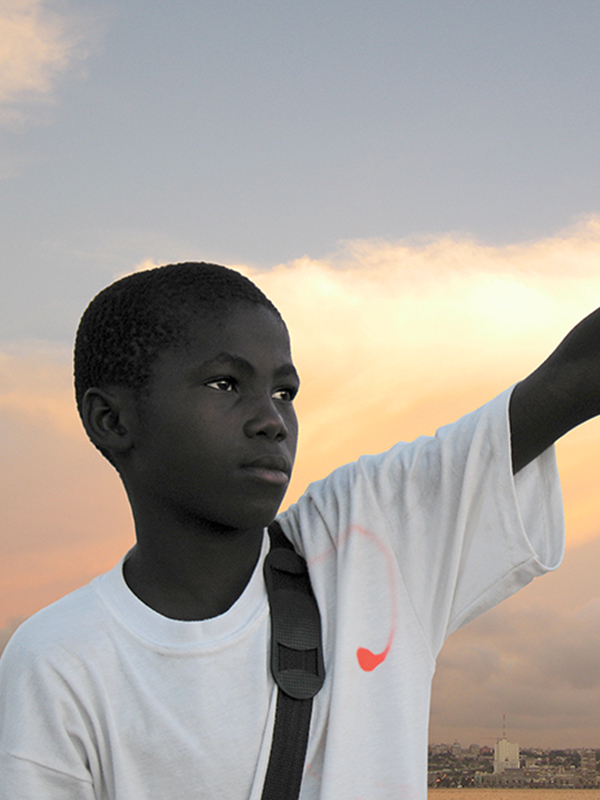
Angel, 2007
Alfredo Jaar
Chile, born 1956
Angel, 2007
c-print mounted on Plexiglas
30 3/4 x 87 inches (78.1 x 221 cm)
Gift from the Marion Boulton “Kippy” Stroud foundation, 2018.10.158
Set against the backdrop of Luanda, Angola, the young man depicted in Alfredo Jaar’s Angel evokes qualities associated with contemporary power objects responding to global inequalities. Before Jaar made the photograph, the subject spoke of the city’s economic struggles, yet emphasized that angels watched over Angolans. The boy’s raised hand is reminiscent of the pose of Central African power figures called nkisi nkondi, whose raised arms held spears or weapons. Other power objects on view in the exhibition address how people used them to call upon ancestors for guidance and protection. Here in the photograph, the young man is an analogous vehicle of power, gesturing toward invisible forces that will guide Angolans to prosperity.
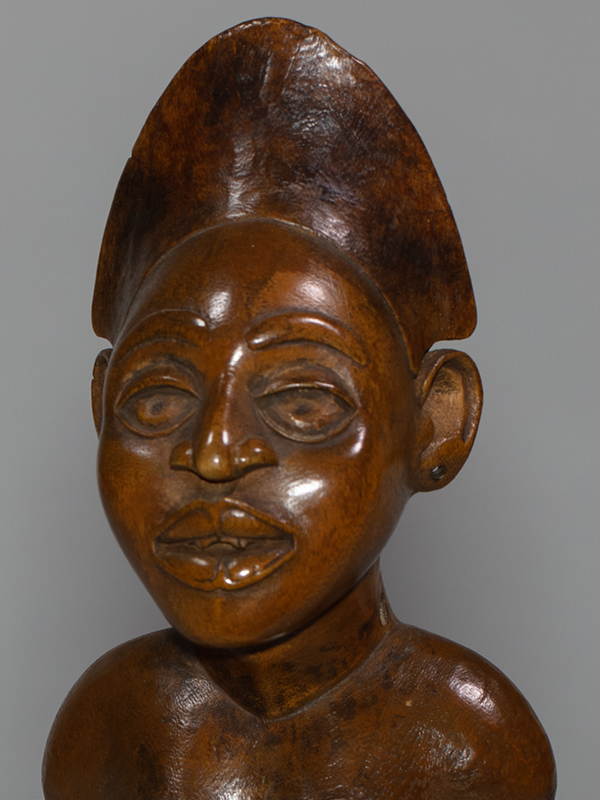
Female power figure (Nkisi), nineteenth century
Artist unidentified
Kongo peoples, Democratic Republic of the Congo and Angola
Female power figure (Nkisi), nineteenth century
wood
height 11 1/4 inches (28.6 cm)
On loan from the Wyvern Collection
Kongo people believed that spiritual forces could be harnessed in material vessels. This figure’s physical form relates to the action it can perform such as powers that probably related to fertility, healing, or nurturing. The posture holding her breasts with her hands emphasizes themes of nurturing and regeneration frequently associated with Kongo female figures. Holes around the breasts, thighs, and back might indicate places where a specialist inserted sharp objects to enable communication with spirits.
Eleanor McCole ’20
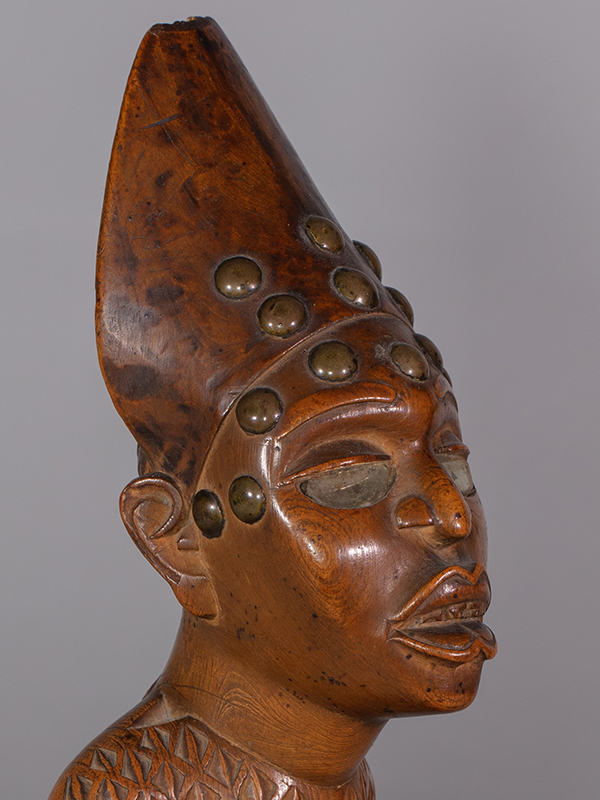
Mother and child figure (Phemba), nineteenth century
Artist unidentified
Kongo peoples (Yombe group), Democratic Republic of the Congo and Angola
Mother and child figure (Phemba), nineteenth century
wood, glass, and brass
height 12 1/4 inches (31.1 cm)
On loan from the Wyvern Collection
This mother and child figure called phemba celebrates fertility, children, and motherhood.
The word phemba has two meanings: reproductive medicine, and the name of a mother and clan founder in
Yombe society. This sculpture depicts a mother in a regal seated posture typical of Yombe leaders.
She wears a hat customarily worn among women chiefs. This figure is a kind of power object that a
specialist called nganga activated to access ancestral power.
Kate Hoadley ’20
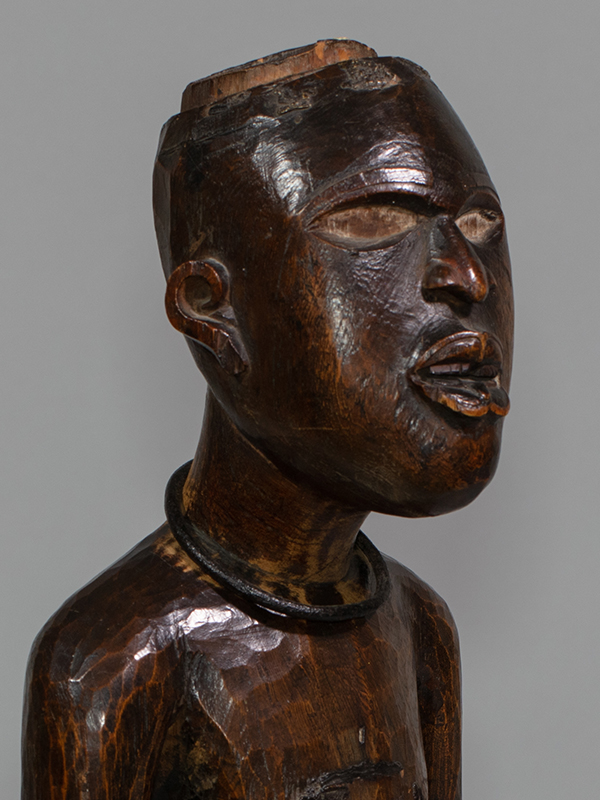
Power figure (Nkisi nkondi), nineteenth century
Artist unidentified
Kongo peoples, Democratic Republic of the Congo and Angola
Power figure (Nkisi nkondi), nineteenth century
wood and metal
height 21 1/4 inches (54 cm)
On loan from the Wyvern Collection
This figure’s large size and pose suggest that it represented and aided a hunter, a trade associated with a class of power objects in Central Africa
called nkisi nkondi. Specialists activated the object to support the hunter’s work through inserting sharp pieces of metal, signs of which are visible on the figure’s legs. Medicinal elements formerly placed inside, including earth and animal products, made the object powerful when activated and spiritually inert when removed.
River Fenton ’22
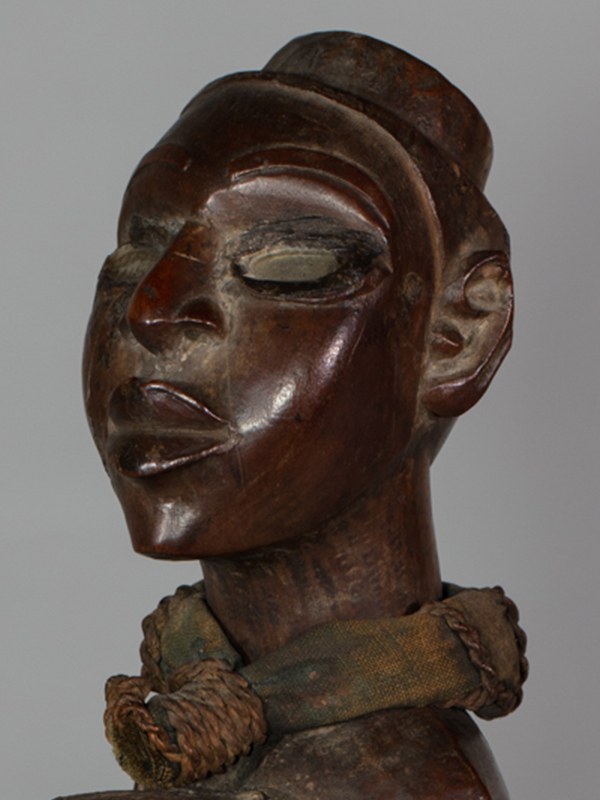
Power figure (Nkisi), date unidentified
Artist unidentified
Kongo, (Yombe or Vili group), Loango coast, Republic of the Congo, Democratic Republic of the Congo, and Angola
Power figure (Nkisi), date unidentified
wood, cloth, twine, resin, earth, and mirrors
height 10 7/16 inches (26.5 cm)
On loan from the Wyvern Collection
The large resin box on this figure’s abdomen once contained substances that enhanced the object’s efficacy and power. This power object called nkisi is associated with the Loango kingdom.
A specialist called nganga would have activated this figure’s healing and protective abilities through the selection and placement of a medicinal charge in the figure’s cavities.
When activated, the object protected its user and their clients against harm, such as illness or thieves.
Hailey Wozniak ’20
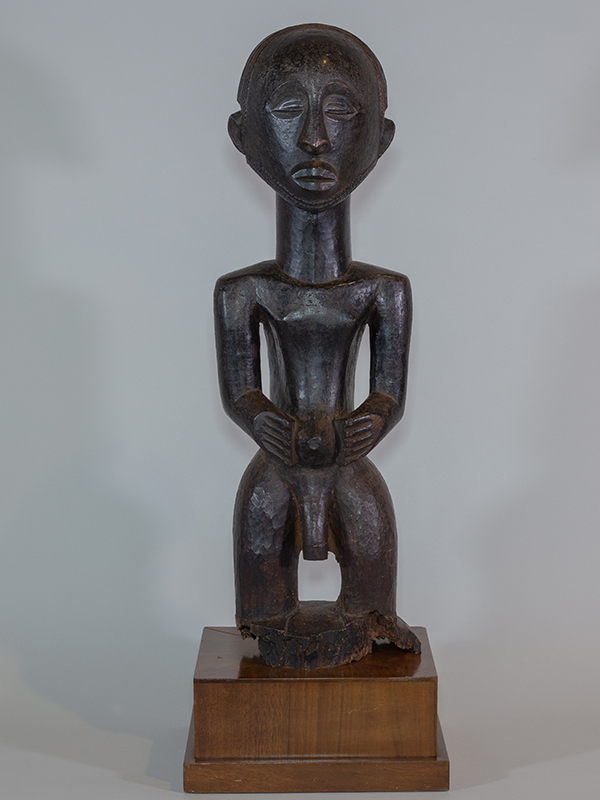
Ancestor figure, nineteenth century
Artist unidentified
Hemba peoples, Democratic Republic of the Congo
Ancestor figure, nineteenth century
wood
height 24 inches (61 cm)
On loan from the Wyvern Collection
This ancestral figure evokes features associated with chiefs in Hemba society. Its design includes abstracted symbols of royal attributes: the tranquil facial expression conveys serenity, the large head indicates wisdom, and the hands placed around the protruding navel express the importance of descent traced through the mother. Ancestral figures were passed down to the Fumu Mwalo (chief of clan), who could have activated the figure during ceremonies by recalling stories of the ancestor figure’s life.
Bianca Torres ’20
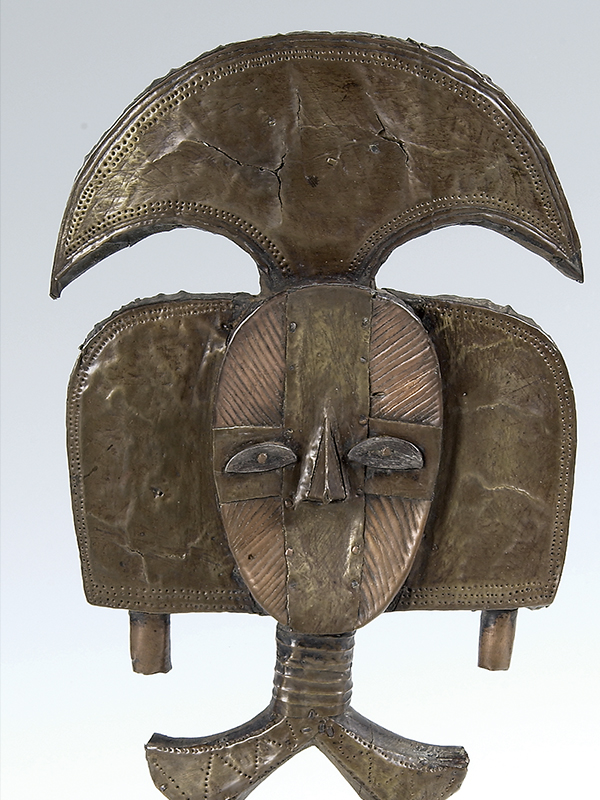
Reliquary figure, ca. 1900
Artist unidentified
Kota peoples (Obamba or Kwele group), Gabon and Republic of Congo
Reliquary figure, ca. 1900
wood, copper, and brass
20 3/4 x 11 1/8 x 1 3/4 inches (52.7 x 28.3 x 4.5 cm)
Florence C. Quinby Fund, in memory of Henry Cole Quinby, Honorary Degree 1916
1969.69.a–.b
This reliquary figure represents an idealized face demonstrating the power of its owner’s ancestors. Once kept with a box containing bones of these ancestors and used for ancestral veneration, these sculptures are now used to invoke and celebrate precolonial tradition. With colonization and conversion to Christianity in the early to mid-twentieth century, many people in Kota regions sold their reliquary figures to foreign collectors, leaving fewer historical works in these regions. Such changes indicate how various people have transformed the uses of reliquary figures.
Claudine Chartouni ’20


